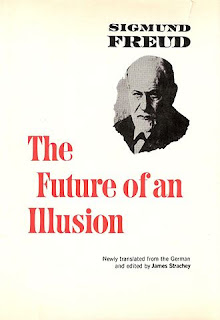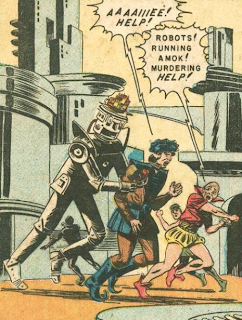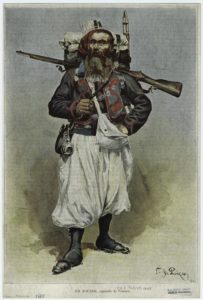| Barrowmaze II; poster was a crowd-funding backer perk |
Being a review of volumes 1 & 2 of the Barrowmaze megadungeon, written by Greg Gillespie (who blogs at Discourse & Dragons). The points in this review generally apply to both volumes unless specified otherwise.
The core idea behind Barrowmaze is a dungeon of tombs spread out beneath a collection of burial mounds. Rather than extending vertically underground like most megadungeons, BM extends horizontally, with difficulty varying as progress is made across the map. Being based on tombs, undead are heavily represented, but they are by no means the only foes that adventurers will come across. There are also several factions of other creatures struggling for control of the Barrowmaze underworld. Overall, the concept is very strong, and the numerous tricks and traps, along with plenty of new monsters, keep the dungeon feeling new and fresh throughout.
I will say right off that, despite a few usability issues, this is one of my favorite dungeons to date, and certainly one of the strongest OSR efforts. It sings with Greg’s direct voice and vision. This is not just a module, but also a treatise on how to run a traditional megadungeon, with emphasis on the risk/reward trade-off. For example, examining burial alcoves, breaking bricked-up walls, and general searching all come at the cost of random encounter checks. This is of course true in all traditional dungeon play, but is made extra salient by the numerous systems that Barrowmaze incorporates, such as using sledge hammers to break door slabs and masonry.
 |
| Image from Discourse & Dragons blog |
Greg went all out regarding the art, especially in volume 2 (which benefitted from crowd-funding financing), and the illustrations are uniformly fantastic. The Holloway picture of the mummy on the back cover of BM 2 is especially noteworthy, but the interior black and white illustrations are also quite strong, and communicate the atmosphere well. There are approximately 60 monster write-ups, and every single one has a picture. Add to this the illustration booklets (for showing to players) that were added for both volumes during the crowd-funding campaign for volume 2. The layout is also crisp and professional looking throughout, and a consistent use of bold and italic makes mechanical info easy to pick out within room descriptions. Personally, I would like it if clues were also highlighted in some way, but I have yet to see a published module that does something like that.
In addition to the small overland area containing barrow mounds, the dungeon proper, and all the new game content (magic items, spells, monsters, etc), Barrowmaze also contains several useful random tables for things like thematically appropriate dungeon dressing and dungeon graffiti. Some of these tables are duplicated between both volumes (a spot check makes the dungeon dressing table in both volumes seem identical between BM 1 and BM 2, but a few of the other tables have minor modifications). BM 2 includes a totally new sarcophagus contents table.
My favorite part of Barrowmaze II is actually a random barrow mound generator. This is a tool (with helpful worksheet!) that allows you to quickly roll up a barrow-themed mini-dungeon by stringing together a (random number) of tomb chambers with varying things like door type, other features, traps, and grave goods. I have already profitably used this generator in a number of places, and it can easily be re-skinned for use in generating other types of areas. The worksheet format in particular is perhaps a model for other similar multi-table tools (it might work well for something like the Random Esoteric Creature Generator, or a random demon generator).
| My copy of the first printing of BM 1 |
However, I do have two criticisms, one large and one small. The large criticism applies to both volumes. The problem is that the map of the Barrowmaze dungeon proper is split seemingly with regard only to page boundaries (not dungeon zones) and included at the end of the book, making referencing the map when reading the room descriptions inconvenient. Rooms, and sometimes even room numbers, are sometimes cut in half based on how the map was paginated (examples: rooms 248 and 265). If one only had the printed book, this would be awkward to use. A separate high-res PDF map file is available, but it is not included with the main PDF and must be purchased separately.
The cartography and layout of the barrow mounds section is much more successful. The mound maps are mostly on the same page as their keys, making them easy to run out of the book. The rest of the dungeon would be much easier to use if it were presented similarly, in dungeon zones or zone fragments.
The small criticism applies only to Barrowmaze 1. That book is around 75 letter-sized pages worth of content. Of that, 12 pages are dedicated to pregenerated characters on full character sheets, one per page. I do not think this is an effective use of space. Barrowmaze 2 is much better in this regard, presenting the same amount of pre-gen content in only 4 pages, and with much better art.
On balance, my recommendation is high. You will likely need to do some prep with the maps before running Barrowmaze, but some level of prep is required with all modules. As a craft, module writing is actually still at a relatively early stage, I believe, and work with efficient form factors is ongoing. The area descriptions, however, are quite good in terms of their level of detail and usability. Most are short paragraphs, with concise text and relationships to other areas clearly presented, and the various tricks and monsters are creatively laid out and easy to get a handle on. Barrowmaze would make an excellent companion for something like an all-in-one starting Labyrinth Lord campaign.
One final note: it looks like Barrowmaze is going on sale this week.
| Caryatid Columns, Barrowmaze II page 32 |








